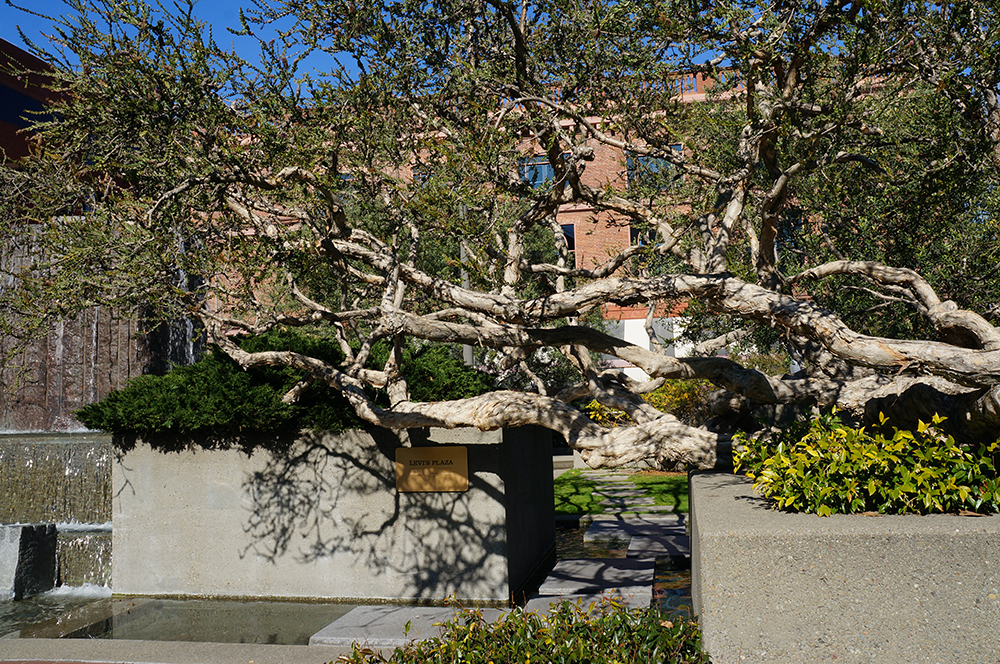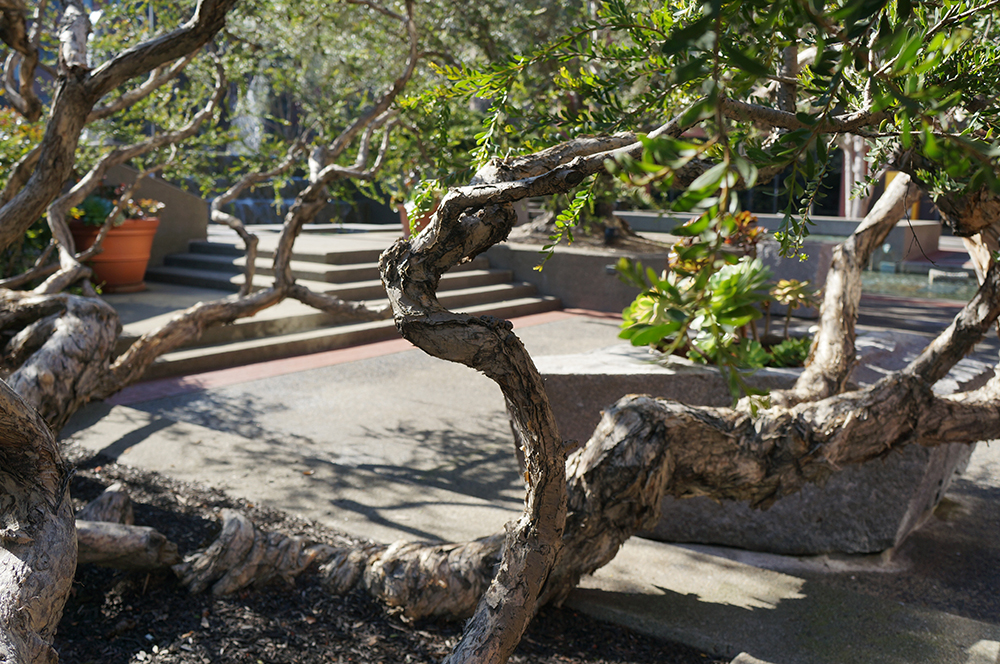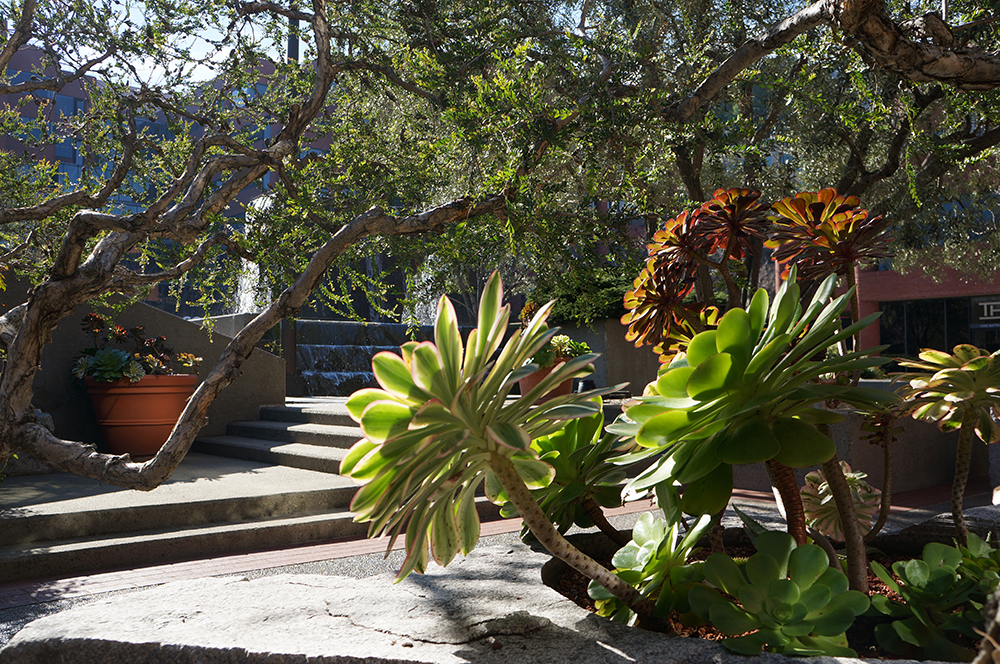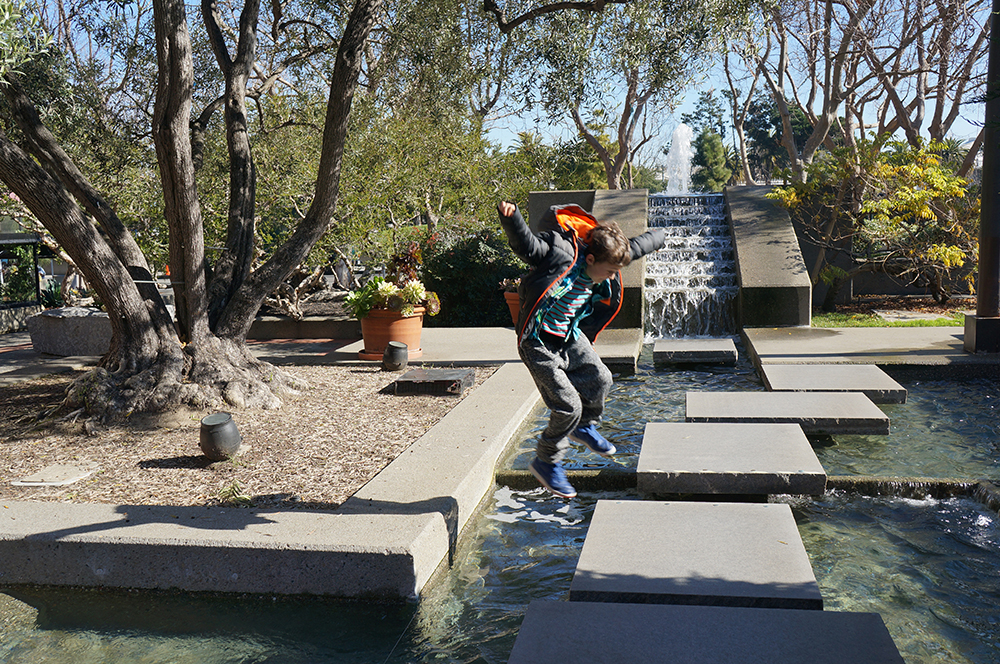Levi Strauss Plaza
San Francisco, California

Nestled at the foot of San Francisco’s iconic Telegraph Hill and located only blocks from both the original and the later Halprin offices is Levi Strauss Plaza. Framed on one side by the hill and by San Francisco Bay on the other, the plaza can be entered from many points along the adjoining streets, but those who climb down the steps of Telegraph Hill are rewarded with a spectacular view of the bay with the plaza in the foreground.

Halprin had a long relationship with the Haas family, prominent philanthropic pillars of the San Francisco community and owners of one of the state’s venerated enterprises, Levi Strauss & Co. He designed private gardens for family members in the 1950s, as well as projects bearing their name in Israel, notably the Haas Promenade. The project is divided by Battery Street into two segments, a hard-surfaced plaza bounded by angular red brick buildings and a green pastoral park. There is a vitalizing duality to the design, in both function and form, yet the park and plaza are deftly united. Both sections feature water gardens, but of strikingly different types. The water source in each is a grand fountain where water emerges from stone.

In the plaza, a huge block of carnelian granite quarried from Halprin’s beloved High Sierra is a dramatic sculptural statement. Water cascades from an invisible source on top of the stone over the lip of the monolith and tumbles in a cacophonous display over steps, fills basins, forms pools, and surrounds circular concrete pads to disappear finally into a swirling vortex fronting the monolith, a perfect circle set against the almost cubic stone. The plaza is laid out in a pattern of white X’s set within a grand grid of bricklined squares on top of a gray concrete slab. The X’s echo the zigzag stepped pattern of the Levi Strauss Corporate Headquarters designed by HOK and Gensler + Associates. The bold ground plane extends across the street into the adjacent park space before giving way to the sinuous curves of the park—a simple yet daring transition. Although the plaza and park appear to be public, they are meticulously maintained private properties.

The park area is a modern California version of a Japanese stroll garden. An architectonic waterfall cascades into a pool with stepping stones before draining into a highly stylized stream running through a green meadow. The urban creek wraps around a willow island, flows beneath a small bridge, and then disappears into a culvert, appearing to pass beneath the Embarcadero, whose multiple lanes of traffic cut off direct access to the bay, truncating what should be a natural link. The stream is bordered by weeping willows, with intermittent granite boulders and stepping stones across the water. A cobblestone-edged pathway through the area has matured into passages of shaded walk along the stream, surrounded by sunny mounds, both welcome aspects in San Francisco’s variable climate. The final design compresses and abstracts the course of water from mountains to upland meadows and ultimately to the sea. Halprin viewed it as a narrative of the Levi Strauss story, the fountains and streams a metaphor for the Sierra and the California Gold Rush, when Strauss founded the company and helped build the new city, and the plaza representing the present day.

The project exemplifies Halprin’s distinctive use of materials, drawing attention to the qualities of stone, concrete, and water to create a refined design language. The stones change from rough boulders that look randomly placed on the grassy mounds and in the watercourse to quarried blocks along the pathways which double as seating. Similarly, concrete evolves from rough to smooth to polished. There is a studied placement of benches, lighting, and simple stone slabs and walls that serve as boundaries; seating, platforms, and stages invite sitting, reclining, and performing. There are subtle transitions, from street to plaza to park and paths and walkways to green grass, where the looped walk surrounds the stream and mounds. Children especially revel in the stepping-stones that are invitations to explore, and for them a bit of a challenge, a performance Halprin certainly intended. In fact, much of the park functions as a de facto playground, although the overall feeling is of an oasis adjacent to the rush of traffic and busy promenade along the Embarcadero. The two sections, plaza and park, are distinctive, but together they achieve a balance—simultaneously corporate and public, playful and contemplative, active and passive.
Photographs by Tara C. Robinson, except where noted.
Learn more about Halprin’s life and work in Lawrence Halprin.